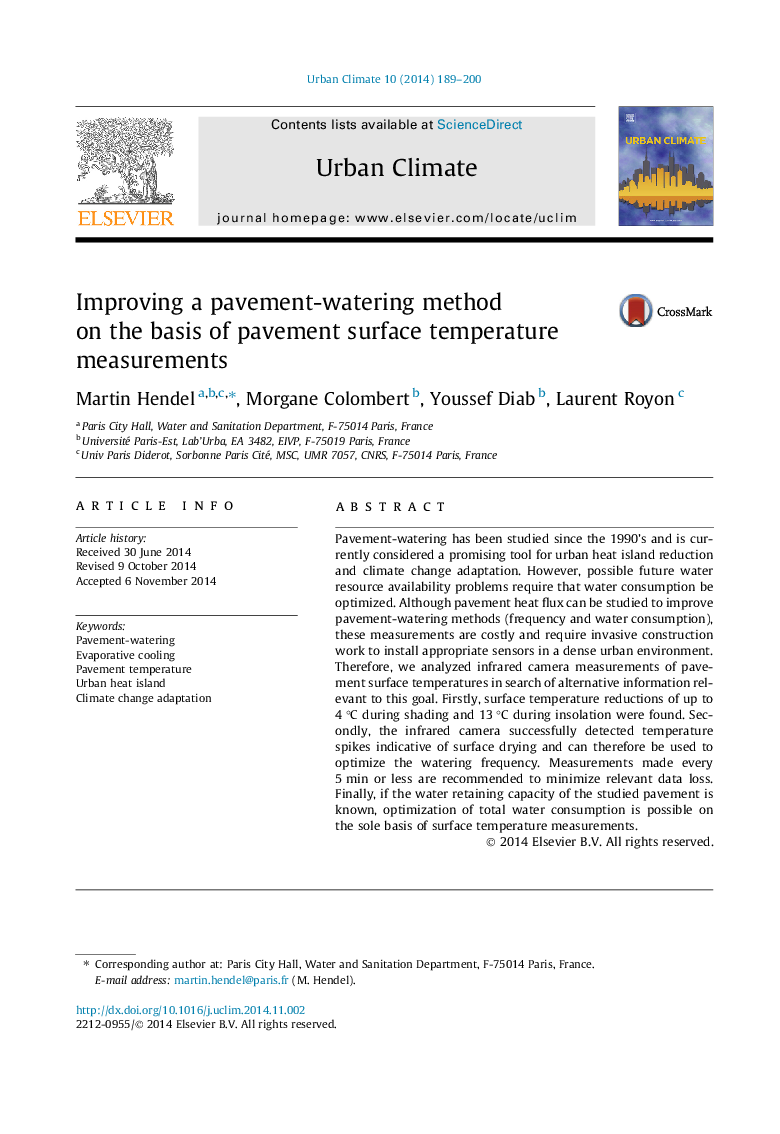| Article ID | Journal | Published Year | Pages | File Type |
|---|---|---|---|---|
| 143783 | Urban Climate | 2014 | 12 Pages |
•The surface temperatures of two pavement and one sidewalk zones were measured.•In hot and dry conditions, surface temperatures ranged from 25 to 55 °C.•Pavement temperatures were reduced by up to 13 °C by pavement-watering.•Sidewalk temperatures were reduced by up to 6 °C by pavement-watering.•Surface temperature measurements can be used to optimize the watering frequency.
Pavement-watering has been studied since the 1990’s and is currently considered a promising tool for urban heat island reduction and climate change adaptation. However, possible future water resource availability problems require that water consumption be optimized. Although pavement heat flux can be studied to improve pavement-watering methods (frequency and water consumption), these measurements are costly and require invasive construction work to install appropriate sensors in a dense urban environment. Therefore, we analyzed infrared camera measurements of pavement surface temperatures in search of alternative information relevant to this goal. Firstly, surface temperature reductions of up to 4 °C during shading and 13 °C during insolation were found. Secondly, the infrared camera successfully detected temperature spikes indicative of surface drying and can therefore be used to optimize the watering frequency. Measurements made every 5 min or less are recommended to minimize relevant data loss. Finally, if the water retaining capacity of the studied pavement is known, optimization of total water consumption is possible on the sole basis of surface temperature measurements.
